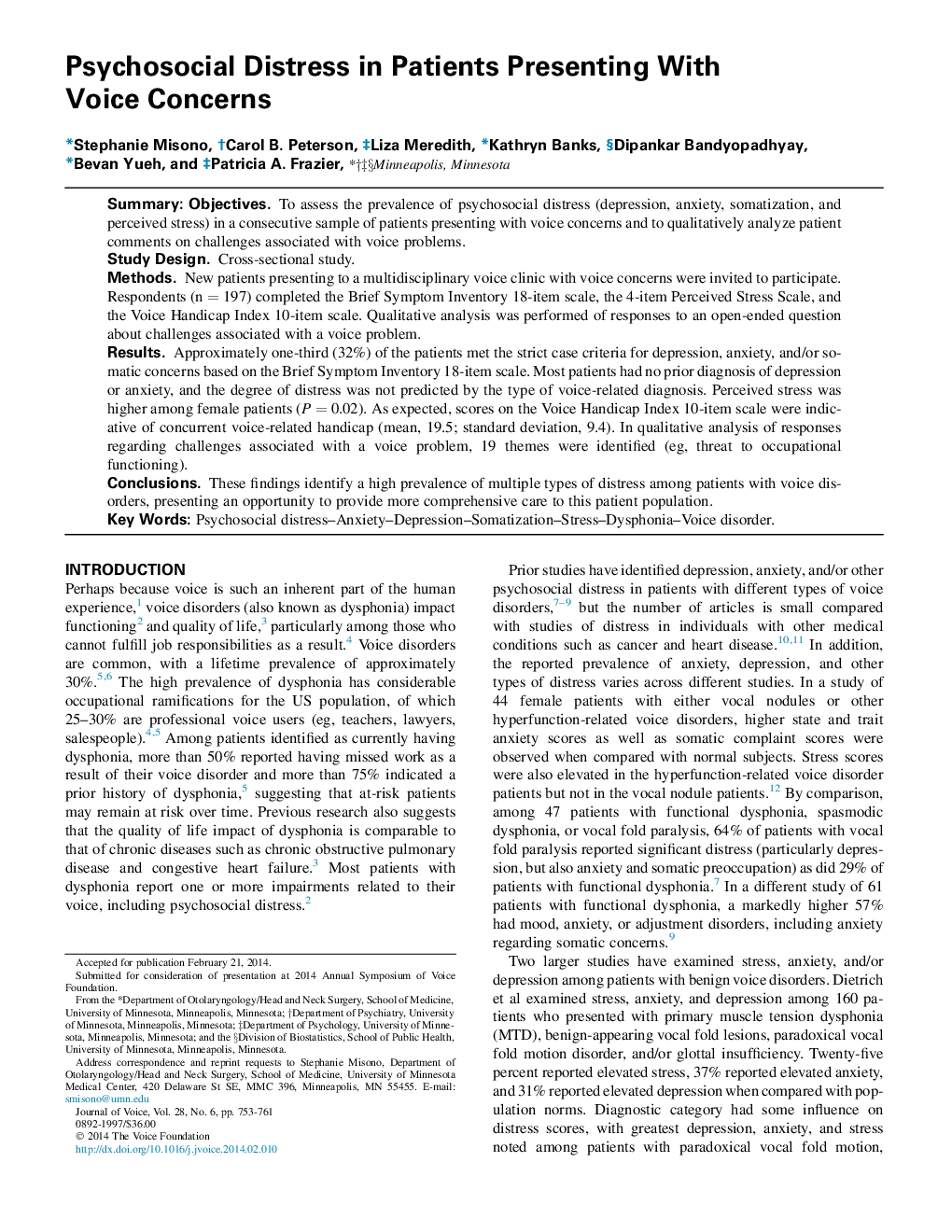| Article ID | Journal | Published Year | Pages | File Type |
|---|---|---|---|---|
| 1101613 | Journal of Voice | 2014 | 9 Pages |
SummaryObjectivesTo assess the prevalence of psychosocial distress (depression, anxiety, somatization, and perceived stress) in a consecutive sample of patients presenting with voice concerns and to qualitatively analyze patient comments on challenges associated with voice problems.Study DesignCross-sectional study.MethodsNew patients presenting to a multidisciplinary voice clinic with voice concerns were invited to participate. Respondents (n = 197) completed the Brief Symptom Inventory 18-item scale, the 4-item Perceived Stress Scale, and the Voice Handicap Index 10-item scale. Qualitative analysis was performed of responses to an open-ended question about challenges associated with a voice problem.ResultsApproximately one-third (32%) of the patients met the strict case criteria for depression, anxiety, and/or somatic concerns based on the Brief Symptom Inventory 18-item scale. Most patients had no prior diagnosis of depression or anxiety, and the degree of distress was not predicted by the type of voice-related diagnosis. Perceived stress was higher among female patients (P = 0.02). As expected, scores on the Voice Handicap Index 10-item scale were indicative of concurrent voice-related handicap (mean, 19.5; standard deviation, 9.4). In qualitative analysis of responses regarding challenges associated with a voice problem, 19 themes were identified (eg, threat to occupational functioning).ConclusionsThese findings identify a high prevalence of multiple types of distress among patients with voice disorders, presenting an opportunity to provide more comprehensive care to this patient population.
